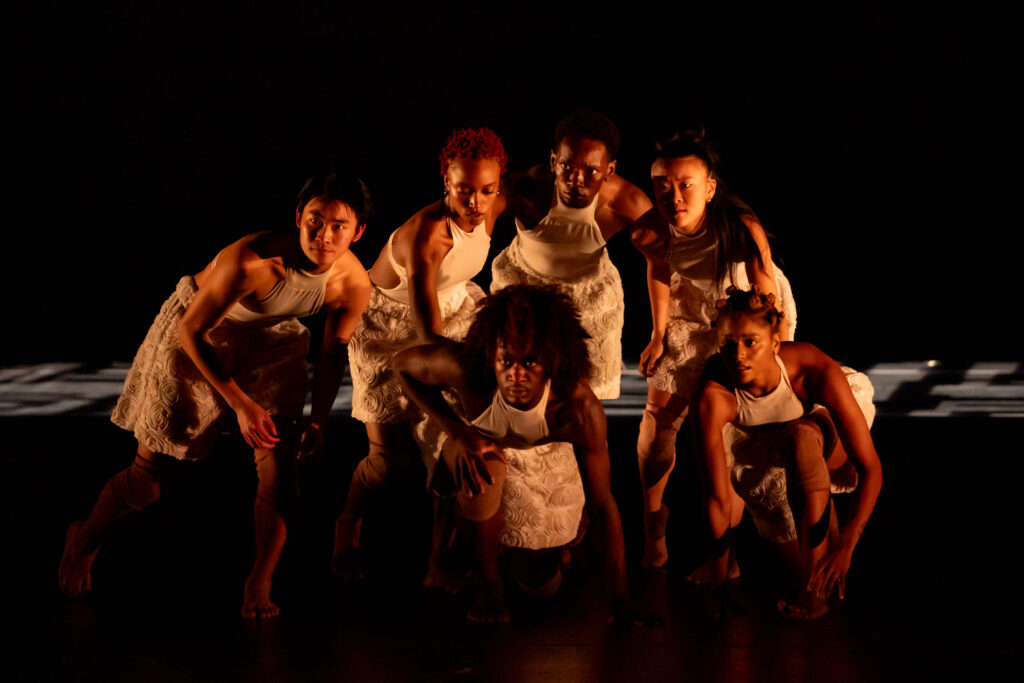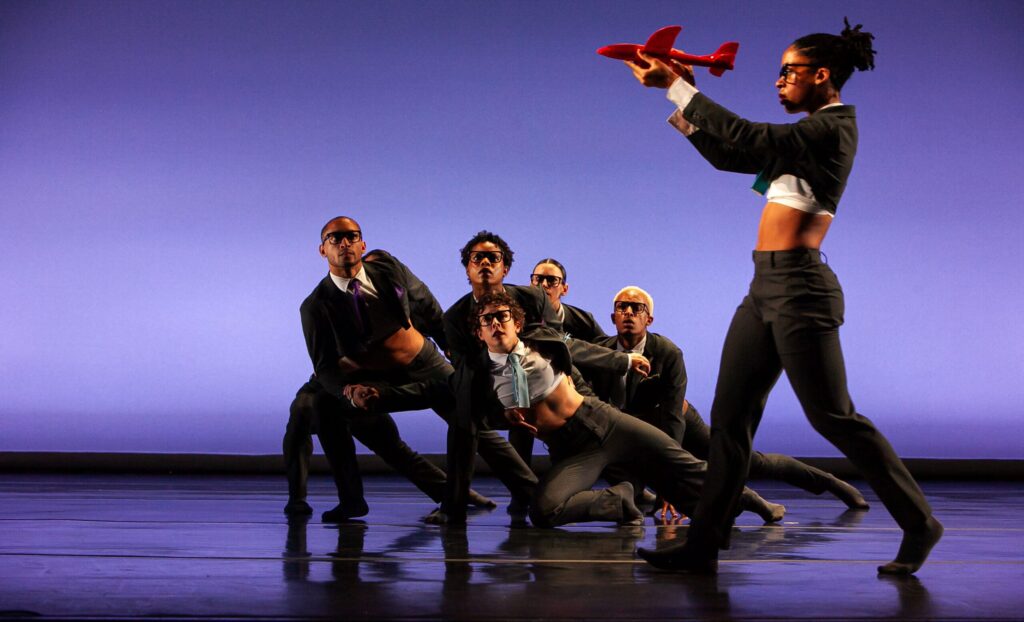VIEWPOINTS – Dance Roundup: At The Joyce, A.I.M BY KYLE ABRAHAM and BODYTRAFFIC perform thoughtfully-curated mixed bills (for the most part)
- By drediman
- April 23, 2025
- No Comments
Amidst this April’s slew of openings, I’ve had the opportunity to dip into The Joyce Theater’s exciting, if frenetic, dance calendar. As always, read on for my assessment two recent (largely) thoughtfully-curated mixed bills at the bustling Chelsea venue.

A.I.M BY KYLE ABRAHAM
The Joyce Theater
Last night marked the return of A.I.M by Kyle Abraham to The Joyce Theater (RECOMMENDED), where the company is slated to perform through Sunday. The mixed bill they performed — which includes four out of four New York premieres — finds the troupe further branching out to explore the works of choreographers beyond those of the company’s namesake founder and artistic director Kyle Abraham. What’s exciting about how these wonderfully trained A.I.M dancers perform these other works is that they approach them as they do Abraham pieces. That is, the intent of their movements emanate from within the music as opposed to being a reaction to it. As such, they imbue less distinguished works like the program’s showy bookends — Rena Butler’s raw yet predictable Shell of A Shell of The Shell and Andrea Miller’s eye-catching if derivative Year (with its distractingly strong shades of the works of Sharon Eyal) — with the kind of authenticity and urgency that registers on a primal level. Suffice to say, the highlights of the evening were its guts, namely Paul Singh’s exquisite solo Just Your Two Wrists and Abraham’s stunning 2×4. Set to a recording of the haunting “just (after song of songs)” from David Lang’s petite masterpiece the little match girl passion, Singh’s solo is an aching expression of inner desolation, especially as danced on opening night by Amari Frazier. A fascinating departure for Abraham, 2×4 is one of the most formal and outwardly rigorous creations I’ve seen from the choreographer. Using bracing live arrangements of Shelley Washington’s “Big Talk” and “Black Mary”, the choreography was clean, refreshingly abstract, yet still showcased Abraham’s trademark sensitivity to the music.
Last week saw the return of BODYTRAFFIC (RECOMMENDED) to the busy Chelsea dance venue. Based in Los Angeles, the company has a tendency to perform accessible, more commercially-oriented contemporary dance, which its excellent dancers typically engage in with energy and enthusiasm. Invariably, the resulting programs turn out to be polished — if a tad generic — crowd-pleasers, and their recent bill of relatively new works (all choreographed in 2024) at The Joyce was certainly no exception. With an overarching theme of memory, the evening commenced with Trey McIntyre’s Mayday. Set to some of Buddy Holly’s greatest hits, this breezy and entertaining homage to the pop singer plays into the dancers’ strengths as effortless, dynamic movers (wittily costumed, each member of the company channeled their own quirky version of Buddy Holly). Although the presence of a red toy plane — which is passed from dancer to dancer as part of the swirling choreography — is a constant reminder of Holly’s untimely death, I felt neither grief nor loss in McIntyre’s insistently upbeat dance. Perhaps the most soulful piece of the bill was Matthew Neenan’s I Forgot the Start, a stylized portrayal of loss, poetically depicted through the translucence of memory. Using a beautifully-curated medley of songs from alt-pop artists such as Sinéad O’Connor and Sufjan Stevens, the work sets itself apart with its shimmering, quivering movement quality and pulsating repetition. Last on the program was the celebratory and infectiously rhythmic Incense Burning on a Saturday Morning: The Maestro. Largely danced behind a scrim on which images are projected (think Pilobolus) and set to a high octane, percussion-driven original composition by Munir Zee, the piece draws connections between the paintings of artist Ernie Barnes’ and the flesh and blood scenes which inspired them — and vice versa. Suffice to say, it was an ideal if surface-level closer.


 Copyright © 2025
Copyright © 2025
Leave a Reply